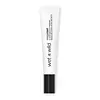What's inside
What's inside
 Key Ingredients
Key Ingredients

 Benefits
Benefits

 Concerns
Concerns

 Ingredients Side-by-side
Ingredients Side-by-side

Isododecane
EmollientMicrocrystalline Wax
Emulsion StabilisingTrimethylsiloxysilicate
EmollientQuaternium-90 Bentonite
Neopentyl Glycol Diheptanoate
EmollientSilica
AbrasiveHydrogenated Styrene/Methylstyrene/Indene Copolymer
Propylene Carbonate
SolventDiisostearyl Malate
EmollientSorbitan Sesquioleate
EmulsifyingPhenoxyethanol
PreservativeTocopheryl Acetate
AntioxidantWater
Skin ConditioningTocopherol
AntioxidantQuartz
AbrasiveHelianthus Annuus Seed Oil
EmollientBisabolol
MaskingSilica Dimethyl Silylate
EmollientPassiflora Edulis Seed Oil
EmollientPentaerythrityl Tetra-Di-T-Butyl Hydroxyhydrocinnamate
AntioxidantArgania Spinosa Kernel Oil
EmollientMacadamia Ternifolia Seed Oil
EmollientCocos Nucifera Oil
Masking1,2-Hexanediol
Skin ConditioningGlycerin
HumectantPrunus Amygdalus Dulcis Oil
Skin ConditioningCaprylic/Capric Triglyceride
MaskingHydrogenated Lecithin
EmulsifyingGlucose
HumectantArginine
MaskingHydroxypropyl Methylcellulose
Emulsion StabilisingCitric Acid
BufferingCI 77220
Cosmetic ColorantAcetyl Glucosamine
Skin ConditioningAscorbic Acid
AntioxidantGlutathione
CI 77891
Cosmetic ColorantMica
Cosmetic ColorantIron Oxides
CI 77491
Cosmetic ColorantCI 77492
Cosmetic ColorantCI 77499
Cosmetic ColorantIsododecane, Microcrystalline Wax, Trimethylsiloxysilicate, Quaternium-90 Bentonite, Neopentyl Glycol Diheptanoate, Silica, Hydrogenated Styrene/Methylstyrene/Indene Copolymer, Propylene Carbonate, Diisostearyl Malate, Sorbitan Sesquioleate, Phenoxyethanol, Tocopheryl Acetate, Water, Tocopherol, Quartz, Helianthus Annuus Seed Oil, Bisabolol, Silica Dimethyl Silylate, Passiflora Edulis Seed Oil, Pentaerythrityl Tetra-Di-T-Butyl Hydroxyhydrocinnamate, Argania Spinosa Kernel Oil, Macadamia Ternifolia Seed Oil, Cocos Nucifera Oil, 1,2-Hexanediol, Glycerin, Prunus Amygdalus Dulcis Oil, Caprylic/Capric Triglyceride, Hydrogenated Lecithin, Glucose, Arginine, Hydroxypropyl Methylcellulose, Citric Acid, CI 77220, Acetyl Glucosamine, Ascorbic Acid, Glutathione, CI 77891, Mica, Iron Oxides, CI 77491, CI 77492, CI 77499
Isododecane
EmollientTalc
AbrasiveCyclopentasiloxane
EmollientTrimethylsiloxysilicate
EmollientDisteardimonium Hectorite
StabilisingPolyethylene
AbrasiveVp/Eicosene Copolymer
Boron Nitride
AbsorbentAluminum Starch Octenylsuccinate
AbsorbentPropylene Carbonate
SolventSorbitan Sesquioleate
EmulsifyingSynthetic Beeswax
Emulsion StabilisingPentaerythrityl Tetraisostearate
EmollientMethicone
EmollientPhenoxyethanol
PreservativeAcrylates Copolymer
Magnesium Carbonate
AbsorbentDimethicone Crosspolymer
Emulsion StabilisingBisabolol
MaskingSorbic Acid
PreservativeOctyldodecyl Stearoyl Stearate
EmollientCaprylic/Capric Triglyceride
MaskingDimethicone/Vinyl Dimethicone Crosspolymer
Skin ConditioningCrithmum Maritimum Extract
Skin ConditioningDimethiconol
EmollientNelumbo Nucifera Stamen Extract
Skin ProtectingCI 77163
Cosmetic ColorantIron Oxides
CI 77492
Cosmetic ColorantCI 77499
Cosmetic ColorantTitanium Dioxide
Cosmetic ColorantIsododecane, Talc, Cyclopentasiloxane, Trimethylsiloxysilicate, Disteardimonium Hectorite, Polyethylene, Vp/Eicosene Copolymer, Boron Nitride, Aluminum Starch Octenylsuccinate, Propylene Carbonate, Sorbitan Sesquioleate, Synthetic Beeswax, Pentaerythrityl Tetraisostearate, Methicone, Phenoxyethanol, Acrylates Copolymer, Magnesium Carbonate, Dimethicone Crosspolymer, Bisabolol, Sorbic Acid, Octyldodecyl Stearoyl Stearate, Caprylic/Capric Triglyceride, Dimethicone/Vinyl Dimethicone Crosspolymer, Crithmum Maritimum Extract, Dimethiconol, Nelumbo Nucifera Stamen Extract, CI 77163, Iron Oxides, CI 77492, CI 77499, Titanium Dioxide
Ingredients Explained
These ingredients are found in both products.
Ingredients higher up in an ingredient list are typically present in a larger amount.
Bisabolol is famous for its skin soothing properties. It does this by blocking inflammatory signals, helping to reduce your body's reaction to irritation.
This ingredient also interferes with the process of hyperpigmentation. This can help with reducing dark spots and uneven tone.
Bisabolol is an antioxidant. Antioxidants help fight free-radicals. Free-radicals are molecules that may damage your skin cells. By fighting these free-radicals, Bisabolol may slow down signs of aging.
Studies have shown Bisabolol to have antimicrobial properties and may be a fungicide. These properties help preserve a product's shelf life.
All these properties makes bisabolol a great skin barrier helper ingredient.
Bisabolol also helps the absorption of other ingredients.
Note: Synthetic Bisabolol has been shown to be less effective.
Learn more about BisabololThis ingredient is an emollient, solvent, and texture enhancer. It is considered a skin-softener by helping the skin prevent moisture loss.
It helps thicken a product's formula and makes it easier to spread by dissolving clumping compounds.
Caprylic Triglyceride is made by combining glycerin with coconut oil, forming a clear liquid.
While there is an assumption Caprylic Triglyceride can clog pores due to it being derived from coconut oil, there is no research supporting this.
Learn more about Caprylic/Capric TriglycerideCi 77492 is also hydrated iron III oxide. It's sole purpose is to give a yellow hue to products.
Iron III oxides are classified as inorganic chemicals for coloring.
Synthetically created Ci 77492 is considered safer than those naturally found. This is because the synthetically created version may contain less impurities. Iron oxides are generally non-toxic and non-allergenic.
Learn more about CI 77492Ci 77499 is also hydrated iron III oxide. It is created from mixing red and black iron oxides. This helps give shades of darkness to a product.
Iron III oxides are classified as inorganic chemicals for coloring.
Isododecane is a fragrance, emollient, and solvent.
As an emollient, it helps your skin stay soft and hydrated. Emollients help trap moisture into your skin.
Isododecane's role as a solvent makes it a great texture enhancer. It spreads smoothly on skin and does not leave a sticky feeling behind. Isododecane also helps prevent color transfer in makeup products.
Isododecane is not absorbed into skin.
Learn more about IsododecanePhenoxyethanol is a preservative that has germicide, antimicrobial, and aromatic properties. Studies show that phenoxyethanol can prevent microbial growth. By itself, it has a scent that is similar to that of a rose.
It's often used in formulations along with Caprylyl Glycol to preserve the shelf life of products.
This ingredient is a solvent. It helps dissolve active ingredients and alter the texture of products.
Propylene Carbonate is commonly used in makeup and with clay, such as montmorillonite or bentonite.
Studies show this ingredient to be safe for cosmetics. When it is undiluted, it can cause skin irritation. (It is always diluted in skincare and makeup). This ingredient is water-soluble.
Propylene Carbonate is created from propylene glycol and carbonic acid.
Learn more about Propylene CarbonateSorbitan Sesquioleate is derived from sorbitol and oleic acid. It is an emulsifier and prevents ingredients from separating.
Specifically, this ingredient is a water-in-oil emulsifier, meaning it helps water dissolve into oil.
Some studies suggest this ingredient may cause irritation in some people. If you are unsure, it is best to patch test.
This ingredient may not be Malassezia folliculitis, or fungal-acne safe.
Learn more about Sorbitan SesquioleateThis silicone is an emollient. Emollients create a thin film on the skin to prevent moisture from escaping.
It is not soluble in water and helps increase water-resistance in products.
According to a manufacturer, it can blend seamlessly with silicone oils, such as Cyclopentasiloxane.
Learn more about TrimethylsiloxysilicateThis ingredient is a combination of red, black, and yellow iron oxide pigments. This combination of colors is usually found in foundation, because it results in a "skin" color.